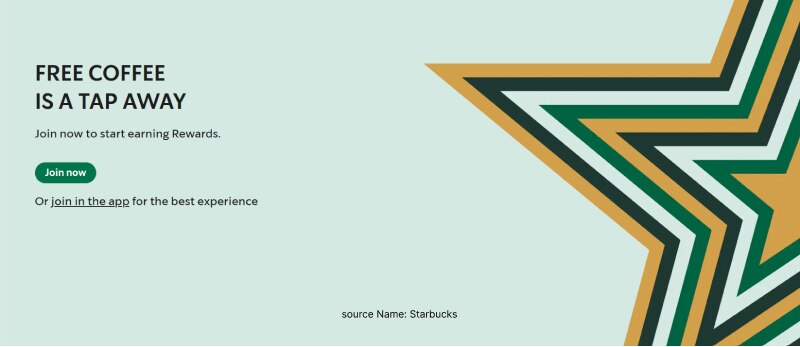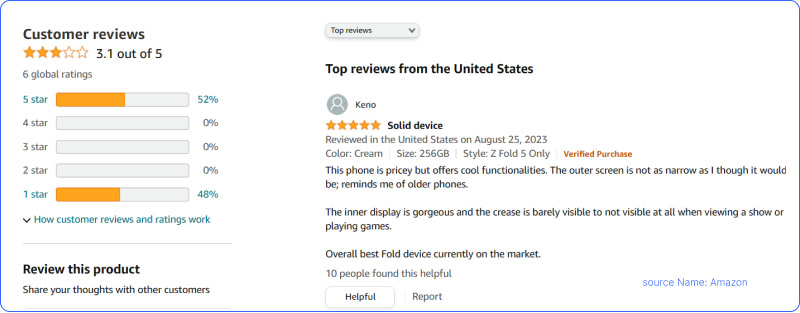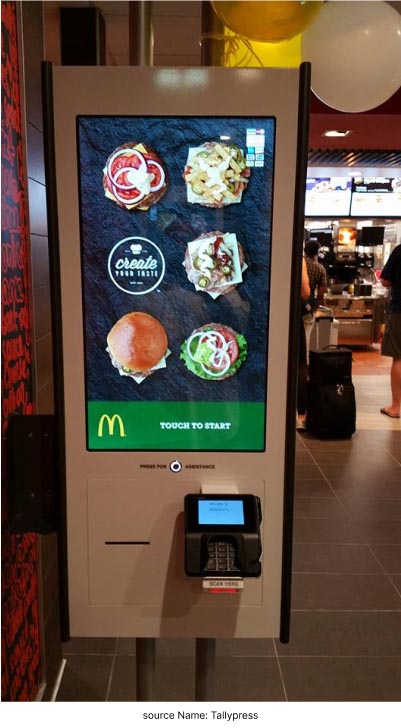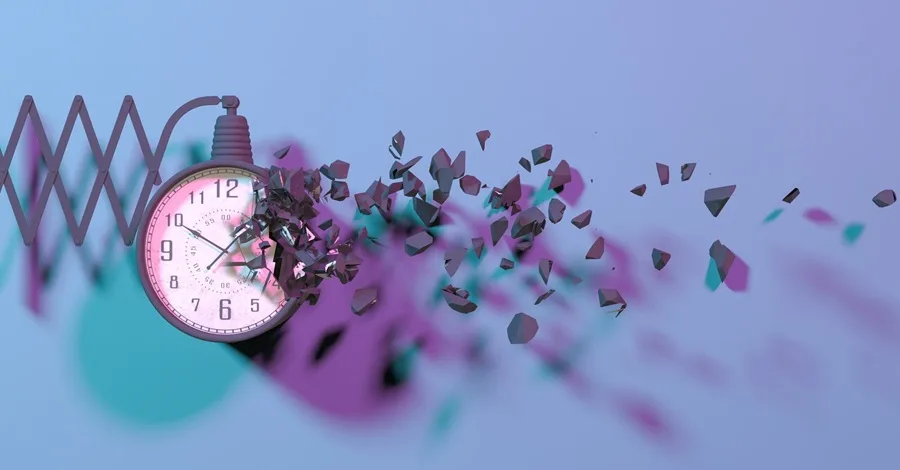Mastering Customer Experience Design: Tips & Strategies
- November 8, 2023
- 17 mins read
- Listen

Table of Content
What strategies can you employ to design your customer experience techniques and ensure their active participation in your brand? How can you prioritize people in your design choices to evoke emotional connections with your products, services, brand, or workplace?
As per a study conducted by the customer experience consulting firm Walker, it was predicted that by 2020, customer experience would surpass both price and product as the primary distinguishing factor for brands. Although companies recognize the significance of customer experience, a considerable number are unsure about the means to enhance it. This is where we step in; continue reading to discover how to craft your customer experience strategy.
Our comprehensive guide on CX design will assist you in grasping how an external perspective can provide you with the insights required to craft future experiences that align with your customer’s desires.
Here, we will describe the steps to design a Customer Experience (CX) strategy that encourages your teams to see things from your customer’s perspective and adopt an outside-in, customer-focused approach to managing customer experiences.
What is Customer Experience Design?
The goal of customer experience design is to establish a unified and captivating brand journey for customers. A CX strategy is designed to guarantee that customers enjoy the best possible interactions with your brand. This strategy should encompass all potential touchpoints customers may come across, including advertising campaigns and customer service interactions.
In contrast to user experience (UX) design, which concentrates on facilitating users’ seamless interactions with your platforms, customer experience design revolves around the comprehensive perception customers hold regarding your product or service. It’s all about making sure that the overall experience aligns with customer expectations.
CX design is a methodology for crafting experiences for individuals that:
- Address a specific issue or challenge
- Evoke favorable emotional reactions
- Encourage usage and shape behavior
It’s important to emphasize that experience design is not a single, static process. It typically entails extensive testing, continuous refinement, and ongoing input from end-users in order to fine-tune and enhance an experience.
Why CX Design Is a Game-Changer?
Developing a culture of CX design thinking within your organization can have a widespread impact across all aspects of the company. While it’s often closely linked to product development and user experience (UX) teams, there’s no team within the organization that cannot leverage the principles of experience design. This involves gaining profound insights into the end-users and employing innovative thinking to meet their requirements.
Your marketing team can detect emerging trends and discover fresh approaches to interact with and convey messages to customers, thereby fostering loyalty. Similarly, your product development team can pinpoint unaddressed needs and employ inventive methods to resolve consumer challenges, leading to the creation of innovative products and services.
Your customer experience team can pinpoint steps to diminish obstacles in the purchasing journey, consequently simplifying the customer experience, and potentially boosting revenue.
Furthermore, it plays a significant role in molding how your services or products are perceived, facilitating customer engagement in a manner that resonates with them, and addressing their needs in a manner they can truly value.
Exploring the Stages of Customer Experience Design
As per the framework presented by the Hasso-Plattner Institute of Design at Stanford, commonly known as the d.school, there are five fundamental stages in the process of designing an experience.
1. Understand
Comprehend your users, their perspective on the world, and the convictions, feelings, and emotions that influence their choices.
2. Clarify
Gain an understanding of the requirements and issues that your intended audience has, which you intend to resolve or cater to. This involves gathering information and insights about what your audience needs and the problems they are currently facing, helping you tailor your solutions or offerings accordingly.
3. Brainstorm
It’s all about questioning existing notions about problem-solving and employing creative thinking to suggest novel solutions. During the creative thinking process, you should be open to exploring new, untested ideas for solving a problem without immediately requiring them to be practical or proven. The emphasis is on generating innovative concepts and solutions, even if they are not guaranteed to be effective at this stage.
4. Model
Begin to put into action the solutions you’ve developed in the earlier phase using a set of initial concepts, which are typically cost-effective or simplified versions in comparison to a final product or feature.
5. Evaluate
Observe how these solutions perform in real-world scenarios. Collect input from your prototypes to determine what is successful, what is not, and what requires enhancement.
It’s crucial here to understand that these stages don’t always follow a strict sequence. For instance, you could be examining concepts and ideas with a group of participants before creating a physical product, and most likely, after each testing or feedback iteration, you’ll likely return to the brainstorming phase as you consider ways to address any feedback that arises.
Designing Exceptional Customer Experiences: Strategies
After you have completely understood your customers, and their preferences, pinpointing the issues, and generating ideas for bridging the experience gap, there are several conventional strategies that customer experience designers employ as they aim to refine it. Let’s read more to understand!
1. Verify that Your Guiding Principles Remain Applicable
In order to craft the most potent approach for building new experiences, it’s essential to confirm that you remain aligned with your customer experience design principles. These principles are rooted in your brand’s CX vision, its mission, and the commitments it makes to its customers. They serve as a compass for shaping the design and delivery of your products and services, as well as the desired emotional impact on your customers.
After defining the guiding principles, like “all customer experiences should be inspiring,” you can confidently start creating experiences that resonate. While crafting new experiences, here you have to consistently reference these principles. If you encounter challenges in engaging your customers, start revising these principles to better align with evolving needs.
Important Tips:
- Regularly revisit and refresh your customer personas to guarantee that your strategies match the characteristics of your intended audience.
- Scrutinize feedback patterns and pinpoint regions where your existing approaches may require fine-tuning.
- Keep yourself well-informed regarding industry trends, alterations in the market, and the emergence of new technologies.
- Examine your competitors’ customer experience approaches to gauge your own performance.
2. Refresh Your Customer Personas
To gain insights into how your customers will engage with your brand, it’s essential to have crafted customer personas. These personas can represent existing customers or the ones you are targeting to attract. These are imaginary characters derived from customer research, replicating the typical characteristics of a specific group of customers.
When initially crafting these personas, you would have collected the necessary data through interviews and analyzed it for common themes and insights. To develop fresh and appealing customer experiences, it’s vital to periodically update these personas. Consider how your customer personas have evolved, what their new requirements are, and how external factors have influenced their preferences.
Important Tips:
- Delve into your existing customer data to extract insights about their behaviors, preferences, and pain points.
- Engage with your present customers through surveys, interviews, or focus groups. Inquire about their requirements, obstacles, and expectations to ensure that your personas accurately mirror their real-life experiences.
- Stay vigilant about ongoing conversations in social media and online communities within your industry.
- Your sales and customer support teams have direct interactions with customers. Collaborate with them to collect firsthand insights.
- Acknowledge that customer preferences and needs may fluctuate with the seasons or depending on their life stage. Make sure that your personas encompass these variations.
3. Map Out Customer Journeys and Establish Fresh Interaction Points
Once you have your revised personas well-established, you can begin to chart customer behavior and pinpoint areas of improvement. These gaps can assist you in delivering a smoother experience or determining where to introduce a new customer touchpoint.
When mapping the customer journey, you can observe how customers engage with your platforms, content, products, and services. Maintaining an ongoing understanding of your customer journey channels and touchpoints across your brand, from your website and social media to phone calls and beyond, will aid you in making informed decisions and crafting experiences that your customers will value.
Purchasing choices and other customer actions should consistently align with their customer persona, and any alterations should be documented. This practice will enable you to develop a more profound insight into the individuals interacting with your brand and their activities. Once you have a clear understanding of this, you can begin connecting it to the reasons why your customers are responding positively to your customer experience design strategy.
Important Tips:
- Initiate the process by charting the customer’s journey from initial awareness to after-sales support.
- Evaluate your current contact points and engagements with customers, pinpointing areas requiring enhancements to introduce new touchpoints that enhance seamlessness.
- Utilize customer relationship management (CRM) and marketing automation tools to streamline and tailor interactions.
- Guarantee a uniform experience across all communication channels, be it web, mobile, social media, email, or in-person interactions.
4. Adapt Your Empathy Mapping to Identify New Pain Points
Customer experience should extend beyond issue resolution, even though it can significantly contribute to why a customer appreciates your products or services. It should also be geared towards addressing emotional needs.
Empathy mapping, as outlined by the Nielsen Norman Group, serves as a visual representation of our insights into customers’ behaviors. It illustrates their verbal expressions, inner thoughts, actions, and emotional states, thus helping us to understand customers’ needs and wants by breaking down their emotions into simpler terms.
Even if you’ve already created empathy maps for your customers, it’s crucial to keep them up to date. Conduct surveys or interviews regularly to continually refine and better understand the reasons behind customer actions.
Important Tips:
- Begin by revisiting your existing empathy maps and evaluate whether they continue to accurately represent your customers’ actions, thoughts, and feelings.
- Examine customer feedback, complaints, and interactions with customer support to detect any recurring problems or issues that might signal evolving pain points.
- Engage with customer advisory boards or focus groups to gain deeper insights into their experiences and the challenges they face.
- Categorize your customer base into distinct groups based on their attributes, behaviors, or preferences. This approach allows for more precise empathy mapping.
- Fuse your empathy mapping with the process of mapping out the customer journey. This integration aids in identifying pain points at various phases of the customer journey and elevates the overall experience.
5. Confirm Organizational Alignment and Consistency in Experiences
Creating a great customer experience isn’t solely the responsibility of a single team, and managing customer experiences goes beyond just the customer service department. It’s important to instill a culture of design and management throughout your entire organization to deliver a comprehensive customer experience.
Even if you have top-notch customer touchpoints, a single negative experience can rapidly discourage customers. Ensuring that your social media channels meet the same high standards as your customer service will increase the likelihood of delighting and engaging your audience.
Important Tips:
- Clearly articulate and share customer-centric objectives throughout your organization, ensuring that all team members understand and are in sync.
- Promote collaboration and facilitate transparent communication across a variety of departments.
- Offer training and educational resources to your workforce to equip them with a customer-centric outlook and competencies needed to provide outstanding experiences.
- Develop an organizational culture that places a strong emphasis on customer-centric values and motivates employees to walk some extra mile in meeting customer needs.
6. Conduct Program Testing and Iterate as Needed
A successful customer experience design involves continuous testing. Incorporate live chat tools, send follow-up emails, and integrate post-interaction surveys to receive real-time or near-real-time feedback on the performance of your strategy. Replicate successful approaches and modify those that aren’t effective. Maintain a commitment to ongoing enhancement.
Utilizing customer feedback offers a straightforward method to gain genuine insights into your customer experience design program. By doing so, you can consistently deliver a unified journey and a smooth experience that continues to delight your customers.
Important Tips:
- Select testing methods that align with your objectives, whether it involves A/B testing, usability testing, or beta testing.
- Set clear benchmarks and specific performance targets to measure the enhancements you expect to get through testing.
- Record the outcomes of your testing and share the insights and knowledge across the entire organization.
- Maintain openness with your customers regarding any substantial modifications coming out from your testing.
Learning from CX Design Success Stories: Practical Examples
In the transition from physical to digital landscapes, where boundaries are virtually nonexistent, the significance of delivering exceptional customer experiences has become a compulsion. Why? Because in the online realm, customers have countless companies to select from for a single product or service. If they do not find the experience enjoyable, they are merely a click away from the next company.
And of course, great customer experience holds significance not just in the digital domain but also in your nearby store, hotel, or restaurant. People seek to relish every facet of their customer journey.
Here, I’ve assembled exceptional customer experience examples from various brands that have gone the extra mile in designing their CX to ensure customer delight. I hope these examples will serve as inspiration for you to enhance and streamline your customer journey too.
The company’s fantastic, gamified loyalty program enables you to earn stars with each purchase of your preferred beverages, leading to exciting rewards. The outstanding features of the app, the superb user interface, and the innovative gamification strategy serve as a highly effective means to boost sales, enhance brand recognition, and ensure customer satisfaction.
For increased participation, Starbucks offers the chance to accelerate your star accumulation through extra challenges and special Double Star Days. Additionally, you can conveniently place your orders in advance while on the move before reaching your nearby coffee shop! The design of their reward system not only increases the company’s revenue but also provides an exceptional customer experience.
The company’s effective gamification strategy serves as one of the prime examples of customer experience design, demonstrating that by introducing extra incentives that result in tangible rewards, you can:
- Motivate increased product acquisitions
- Foster repeat visits
- Acquire valuable customer information
- Promote products and partner deals
Moving on to our selection of exceptional customer experience design instances is Amazon, a powerhouse in customer feedback and one of the globe’s largest e-commerce platforms. In addition to establishing benchmarks in e-commerce through competitive pricing and an unparalleled product selection, the company is also a foremost authority in the realm of digital product experience.
With search functionality akin to Google and an extensive product education system, Amazon simplifies the process of assessing whether a product suits your requirements. Their robust customer review and rating system is a valuable resource for gaining deeper insights into a specific product.
Customers who have made prior purchases of the product can also include images with their reviews, and you have the option to easily translate these reviews into your native language. The company also offers a helpful recommendation system that aids in determining which product is most suitable for your requirements.
What’s even more fantastic is that you can even rate others’ reviews, thus sharing your feedback to inform others about their helpfulness.
Certainly, when it comes to showcasing the potential of artificial intelligence in designing customer experiences, Netflix stands out as an exceptional example. The company employs Artificial Intelligence and Machine Learning to craft personalized movie recommendations.
By scrutinizing the viewing habits of users who share similar preferences, it presents content that aligns with your interests, ensuring your continued engagement with the platform. However, that’s not the end of the story. Additionally, Netflix employs a vast array of video frames as thumbnails for performance evaluation and tailors these thumbnails specifically for each individual user, based on their predicted click preferences.
Our next point of interest is McDonald’s. In response to a prolonged decrease in sales, the company made a strategic shift to prioritize enhancing the customer experience rather than merely making adjustments to its marketing strategy.
In addition to updating their menu and emphasizing the use of superior-quality ingredients, the company also implemented a worldwide redesign of their brand. Embracing this strategic direction and emphasis, McDonald’s underwent a significant modernization of its restaurants, introducing cutting-edge technology designed to enhance the customer experience, such as self-service kiosks. These kiosks enable customers to place and pay for their orders via digital screens, simplifying the process and making it easier for them to receive their prepared orders.
These kiosks substantially enhance the in-restaurant customer experience by reducing waiting times in lines, enabling faster food delivery. Additionally, they let customers customize their orders, all from the convenience of the touchscreen.
As a result of these extensive customer experience improvements, McDonald’s saw a remarkable increase in sales, surging from $7.1 billion to $9.3 billion in just four years.
Now, let’s delve into Google and its most recent addition: Hum to Search. Unveiled in October 2020, this feature was developed with a straightforward goal in mind – to assist you in locating those songs that are playing in your mind. All you have to do is sing or hum a snippet of the song you remember for a brief moment, and Google’s feature will provide the most relevant results it can identify.
As reported by TheVerge, Google employs machine learning models to convert the audio into a numerical sequence that represents the song’s melody. This sequence is then compared to a database of existing songs for matching.
While this feature is still in its early stages, and its full potential remains to be uncovered, I am confident that it positions Google to gain a competitive edge for its Sound Search tool, which enables users to identify songs as they are playing.
Consider this scenario: At times, we invest months and even years in the quest for a fantastic song that we once heard on the radio but couldn’t recall the lyrics. The ability to employ this tool to find the songs that deeply resonated with us is unquestionably one of the finest instances of enhancing the customer experience that comes to mind.
Revamp Your CX Design with REVE Chat
So, let’s get started, shall we? There are numerous tools in the market at your disposal to assist you in crafting your customer experience journey. Ultimately, it’s all about providing the best experience to your customers. In this regard, I’d like to suggest REVE Chat, a customer engagement software that can certainly aid you in developing a well-suited CX design for your brand.
REVE Chat is an omnichannel customer experience platform that empowers you to deliver instant support to your customers across multiple channels, including your website, mobile apps, and various social media platforms like Facebook, Viber, Instagram, Telegram, and WhatsApp.
Furthermore, the platform also includes REVE Chatbot, an AI-driven customer engagement solution. This not only optimizes your business processes, particularly in customer service but also provides around-the-clock customer support, surpassing your regular working hours.
Keen to give it a try? REVE Chat offers a 14-day FREE TRIAL for you to discover its unique features. Don’t hesitate; SIGN UP today!










